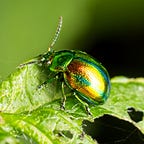Photographing Insects: Intimate Moments
Catching insects in the act of reproduction
When you look carefully you often see insects mating, officially called in copula. And people seem to like those shots because you see them rather often on social networks. Here you find some of such shots I took and some background information.
Photographing insect that are mating is rather easy. This is due to a number of reasons:
- The combination of two insects is larger and, hence, easier to spot.
- Even though they can fly together, they tend to sit still more often, so they can more easily be approached.
- They often stay connected for a long time, so you have many opportunities to photograph them.
Dragonflies
I guess everybody has seen dragonflies or damselflies (the tinier ones) connected, sometimes forming a heart-like shape. This is not rare. The duration can be a couple of hours, depending on the species. For some species, after the mating, they stay connected while the female finds a spot for the eggs.
An interesting fact is that these insects spend most of their time as larvae (also called nymphs). This takes typically one or two years and for some species even longer. Once they become an adult, they often live just one or two weeks with the only purpose to mate and lay eggs. You can find some more information about the life cycle of dragonflies and damselflies here.
Connection
Different species connect in different ways during mating. Dragonflies make a nice circle-like or heart-like shape. For many bugs and flies one sits on the other. But, for example, for crane flies one just hangs below the other, as the following picture shows. This looks rather clumsy and not very comfortable. They can actually fly this way.
Photographing
It is not easy to photograph mating insects in interesting ways. Normally you want both the male and female in focus. Using a top-down shot is often confusing with multiple legs and antennas, but sometimes it adds something (see below). A side shot works best in this case. If you get both insects in the same depth plane they will both be sharp.
But a bit more variation make the shots more interesting. For example, I like the following image where you basically just see the four huge eyes of the two hoverflies. You have to image the rest of the action.
And the next image give a nice play of lines because of the 12 legs sticking out in all directions. It creates some confusion in the viewers mind about what she is looking at.
Conclusions
It is easy to find insects in their intimate moments. Photographing them is a bit of a challenge, in particular to get both insects in focus and to avoid an image that is too cluttered.
I personally am not a big fan of these shots. There are so many details, making it hard for the viewer to decide what to focus on. But occasionally it can lead to interesting or funny shots.
Next: Using a monopod
Previous: September shots
Mark Overmars is a dedicated insect photographer that loves to share and regularly publishes about his work and about photography in general. You can visit his website at www.insectphotography.org. Download his free insect photography book at www.insectphotography.org/book.
